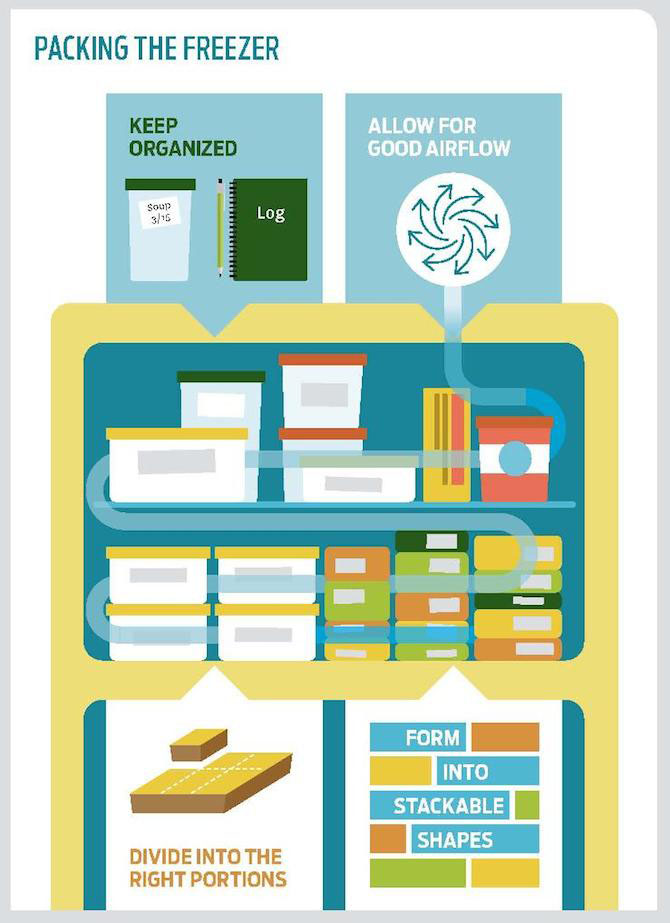Maybe you caught John Oliver’s segment on food waste. Or you heard the news that the U.S. government set an ambitious goal to slash food waste in half. You were shocked when you learned that we waste 40% of the food we produce, and you are outraged that this waste happens while millions of Americans are living with food insecurity.
You’re convinced: It’s time to waste less food.
Then you open your fridge and realize half a bag of lettuce is about to turn to mush and there’s a container of yogurt past its expiration date. Bummer.
Even for the most motivated among us, cutting down on food waste at home can mean changing lifelong habits of shopping, cooking and eating. Luckily, there’s a new book that can help. The Waste Free Kitchen Handbook by Dana Gunders, staff scientist at the Natural Resources Defense Council, is a slim, encouraging guide to wasting less food packed with practical, attainable strategies for busy people.
I’ll get to what’s in the book in a minute. First, you might be wondering why Gunders, who is a scientist, not a cookbook writer, wanted to write this book? As part of her work with the NRDC, Gunders is one of the leading voices in food waste research. She’s the author of Wasted: How America is Losing Up to 40 Percent of Its Food from Farm to Fork to Landfill, a 2012 paper that galvanized the waste-less-food movement in the U.S. As a result, she’s traveled the country talking about food waste, and wherever she goes, she says people ask her what they can do about it.
“Clearly, the story of food waste has struck a chord,” she says. “From a scientist’s perspective, I set out to determine what information would help people waste less. When you’re standing in your kitchen with a wrinkled tomato, what do you need to know in order not to waste it?”
The book is organized into three sections. In Part One, Gunders offers useful strategies for shopping, food storage, cooking, food safety and composting. Easy to read in one or two sittings, this section includes helpful tools, like a meal plan template and a chart for tracking which foods you waste, the reasons why you threw them away and the cost of each. Guilty of habitually cooking too much food? Portion size guides will help you prep the right amount for weeknight dinners and parties. This helpful illustration shows the best way to pack your freezer:
Part Two is a collection of 20 recipes designed to help you use up “the random assortment of ingredients in your fridge at the end of the week.” You’ll learn how to turn stale tortillas into chilaquiles, leftover rice from Tuesday’s takeout into fried rice, and too-soft bananas into sorbet. The recipes are easy to accomplish, and most can be adapted to whatever ingredients you have on hand.
Part Three is a directory that details how best to store and freeze a variety of foods for maximum shelf life. A “use it up/revival” section details how to salvage foods that might be past their prime or how to eat parts of food you may might normally trim off. Broccoli stalks, for instance, can be grated for slaw, and the green leaves at the base of cauliflower can be used like cabbage.
As for that bag of lettuce, here’s Gunders’ advice for making it last longer: “Store with a damp cloth in an airtight container in the high-humidity drawer of the refrigerator. Packaged lettuces with a few bad pieces can be saved by removing those pieces and then soaking the rest in ice water for 5 to 10 minutes.”
And before you toss that yogurt container, that so-called “expiration date” may not be what it seems. “Typically, they are manufacturers’ suggestions for when the food is freshest or at its peak quality,” Gunders writes. “Many foods will stay good for days or even weeks after the date on the package.” Take a minute to look at it and smell it before you toss it—it might still be good.
Order a copy of Waste Free Kitchen Handbook through our Amazon Smile link and a portion of your purchase will be donated to Sustainable America to support our food waste reduction efforts. Also, check out our resources on ivaluefood.com for more tips for reducing food waste.

